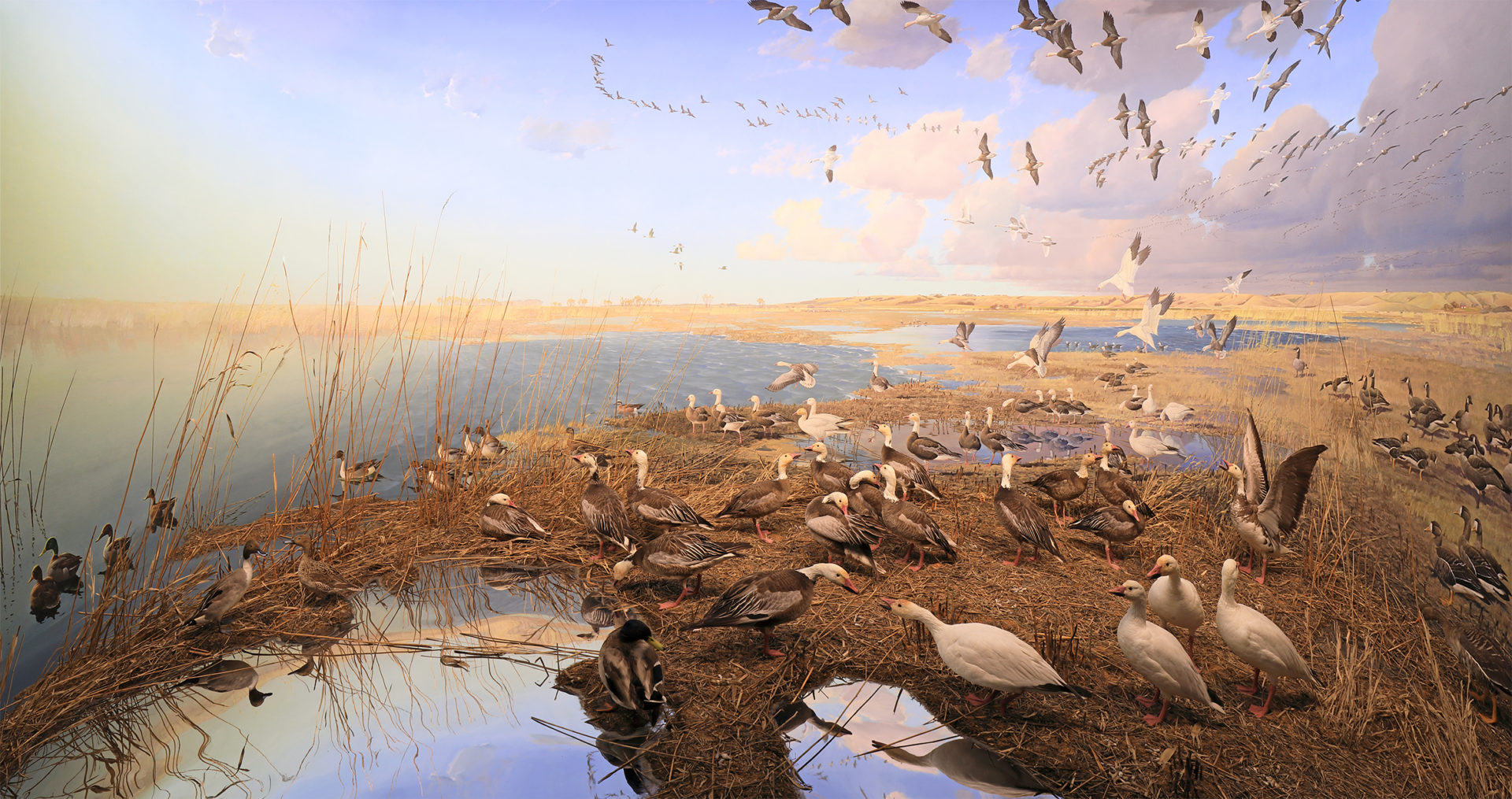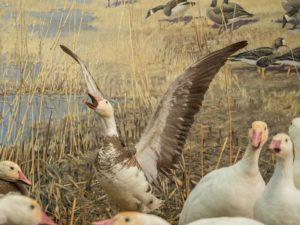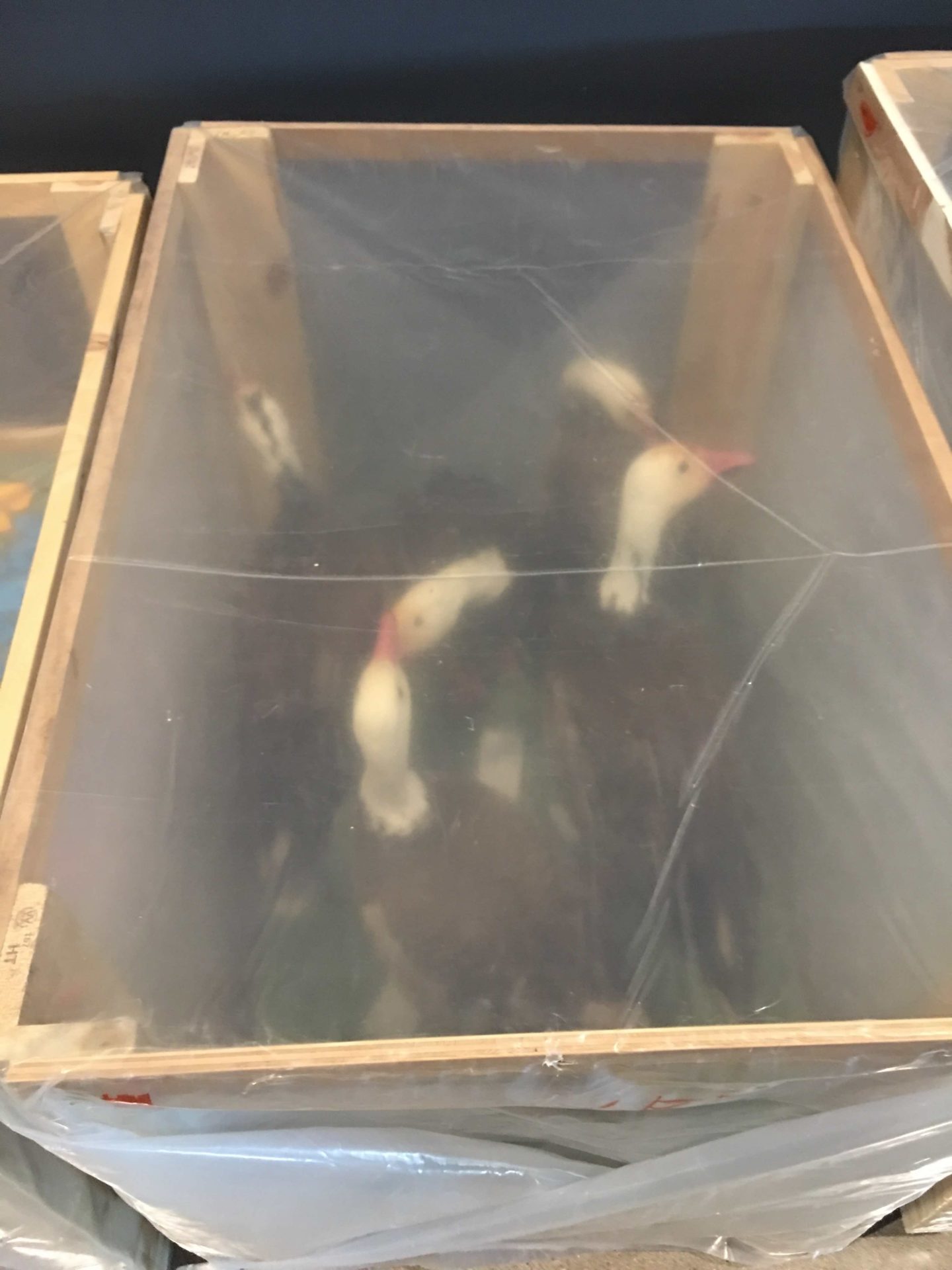
Diorama Spotlight: Snow Geese at Lake Traverse
Published06/24/2020 , by Adam Hartman
In North America, few natural events mark the changing seasons as dramatically as spring waterfowl migration. As flocks of tens, even hundreds of thousands, of snow geese soar overhead to their summer breeding grounds in the Arctic, spring returns in the form of snow melt, new growth, and longer days.
During their cross-continental journey, some waterfowl make a pit stop at Lake Traverse on the Minnesota-South Dakota border. This early April scene, depicted by Francis Lee Jaques and Walter Breckenridge in 1942, is located on Minnesota’s western border on the north end of Lake Traverse, looking southwest towards South Dakota.
After a meal of crops left over from the previous autumn’s harvest, flocks of snow geese return from nearby fields and bed down along the lake shore. The geese turn in early, and each finds a spot to rest to recuperate before the next day’s early departure. In the scene, early the next morning, a squabble breaks out among the gaggle with an exchange of honks and hisses. The journey has been long and taxing, but its payoff in the Arctic will be well worth the effort and energy spent to get there.

Snow Geese at Lake Traverse is widely believed to be one of the finest bird dioramas in the world, with a grandeur that lies more in its scope than its subject. For many of us, our attitude towards geese is neutral at best, but Jaques and Breckenridge created this piece that beautifully depicts them in nature, independent from humans. As in nature, everything is not perfect. The foreground specimens are posed naturally, not upright or formal. Birds are painted in motion. Reeds are left matted and broken. The ground is even covered in goose poop! That attention to detail is what roots this diorama in realism, and makes it a memorable piece that captures the spectacle of migration.
Even the foreground’s water features were designed with care and purpose. At the time of this diorama’s construction, finding a material that looked like water but didn’t damage the rest of the diorama was difficult. For the pools of water in the foreground, Breckenridge used sheets of chrome-plated copper to depict the still, reflective water of a calm spring evening. These pools of “water” reflect the sky painted on the diorama’s ceiling — the only painted ceiling in any of the Bell’s dioramas.

A “hybrid” goose displaying both color phases stretches its wings on the diorama’s right side, showing off its mottled grey and white patterning.
The snow geese here have two morphs, or color phases: the white snow goose and the dark snow goose, which was previously classified as a distinct species —the “blue” goose. However, genetic analysis has shown these two morphs are part of the same species. Like human hair, goose feathers come in different colors, and the color of an individual’s feathers is determined by only a single gene. A “hybrid” goose displaying both color phases stretches its wings on the diorama’s right side, showing off its mottled grey and white patterning.
Many other waterfowl species appear as well. Mallards, pintails, wigeons, and gadwalls paddle through the shallows, making space for their larger, more temperamental goose cousins. Greater white-fronted geese and Canada geese gather further from water’s edge, and four tundra swans fly just above the horizon, hidden in plain sight by Jaques amongst the hundreds of painted snow geese in the sky.
The scale and quality of the marsh habitat near Lake Traverse makes it a great stopping point for so many waterfowl species even now, 70 years after this diorama’s construction. Few places are able to support such huge numbers of birds during their northern spring migrations. Protecting habitat like Lake Traverse is key to ensuring survival for generations of waterfowl to come, especially as the human population and development continue to grow and urban environments spread.
Location: Lake Traverse, near Wheaton, Traverse County (near the north end of Lake Traverse along western boundary of Minnesota). The view is in the early morning looking southwest with South Dakota in background.
Biome: Prairie Wetlands
Date depicted: 1942
Date completed: 1942
Dimensions: 10’ x 22’
Background Artist: Francis Lee Jaques
Foreground Artist: Walter J. Breckenridge
Season: Early spring morning
Donors: Founding Donor – Martin Koon Bovey; Donors of 2018 Restoration – Diorama
Legacy Society
Restoration 2017: Midwest Art Conservation Center, Chase Studios, Museum
Professionals, Split Rock Studios




